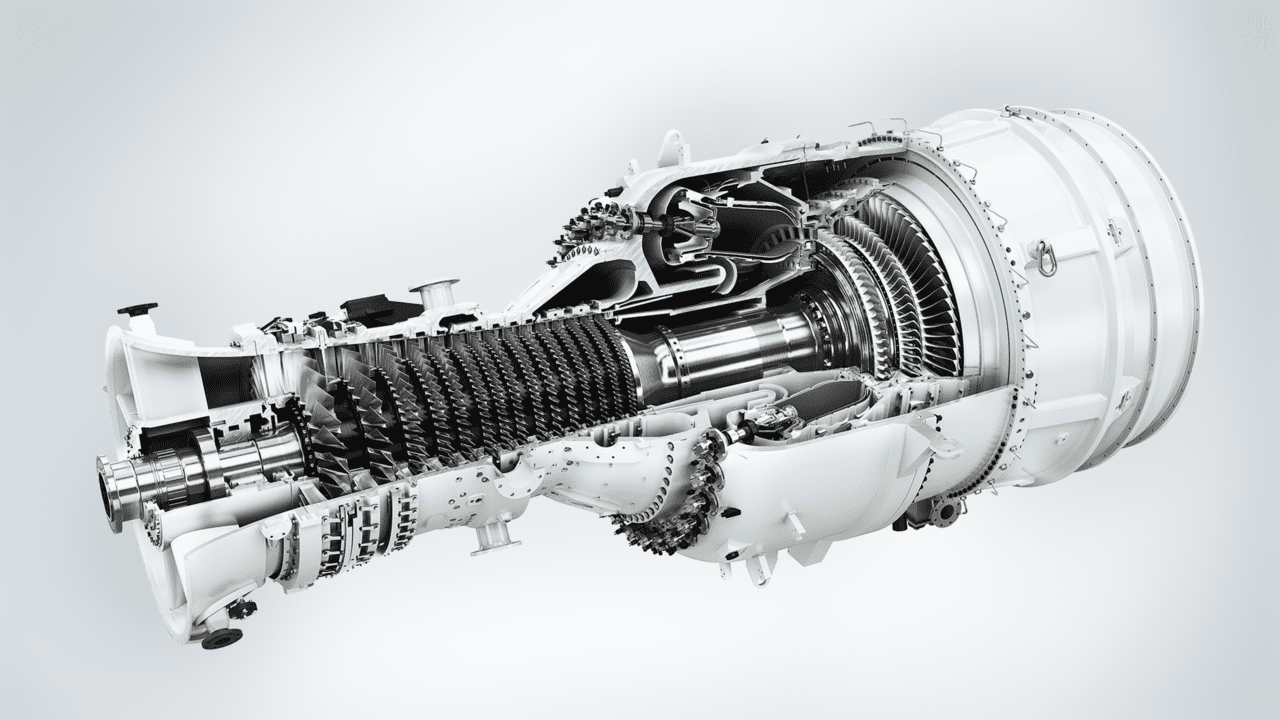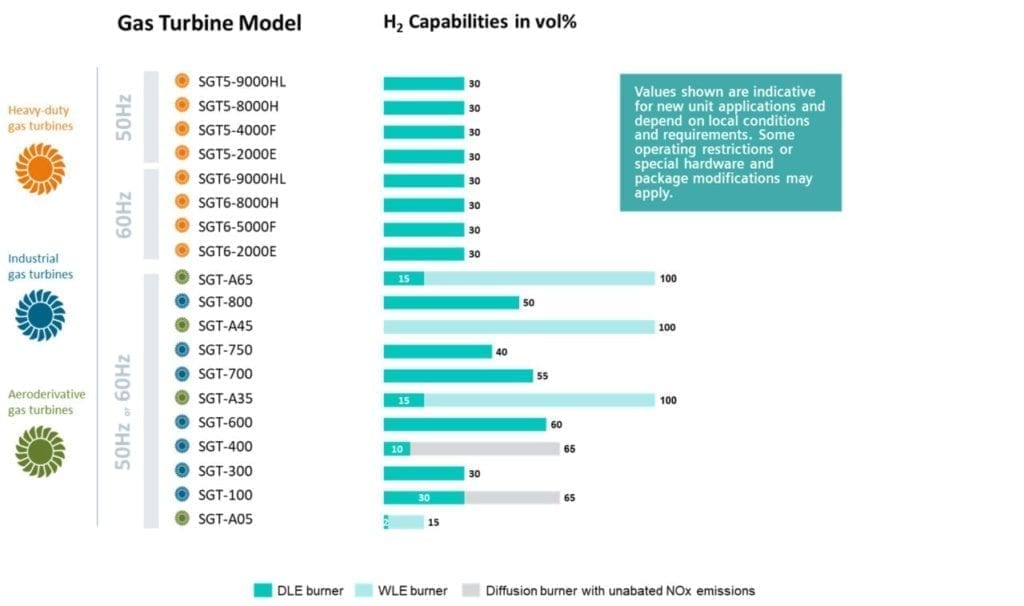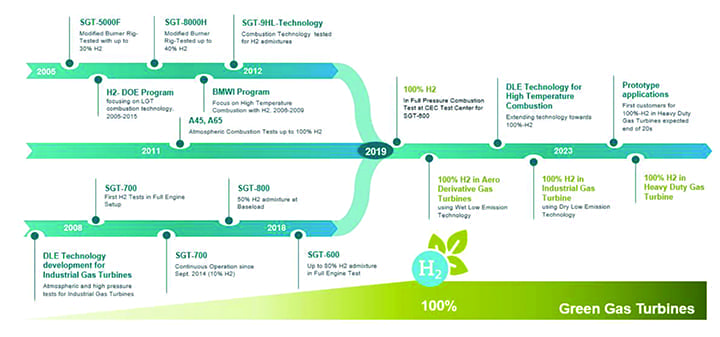Siemens’ Roadmap to 100% Hydrogen Gas Turbines
The post Siemens' Roadmap to 100% Hydrogen Gas Turbines appeared first on POWER Magazine.

Aligning with a target set by European industry association EUTurbines, Siemens Gas and Power in January 2019 rolled out an ambitious roadmap to ramp up the hydrogen capability in its gas turbine models to at least 20% by 2020, and 100% by 2030. The push has been echoed to varying degrees by all the major gas turbine manufacturers, which posit that hydrogen capability may give gas power generators worldwide more options in low-carbon energy markets and prevent stranded assets owing to regulations and emissions restrictions.
The reason: Gas turbine installments have tripled over the past 22 years as flexibility and efficiency have grown into a pivotal requirements for nearly all resources, and securing another key role for new and existing gas turbines in enabling a smooth transition from fossil to decarbonized power systems just makes good business sense.
Getting to 100% Hydrogen Over Only 10 YearsBut Siemens' roadmap stands out specifically because it extends across its portfolio-from its smallest aeroderivative gas turbines to its behemoth heavy-duty gas turbines-and it seeks to achieve the 100% leap over only 10 years. As the company explained in a recent white paper, the ambitious move is rooted in confidence that several gas turbine models can already operate on high percentages of hydrogen fuel, with the specific capability of a unit depending on model and the type of combustion system (Figure 1).
 |
1. This graphic shows the hydrogen capability for Siemens' gas turbine portfolio in new-unit applications. WLE stands for wet low emissions and DLE stands for dry low emissions combustion technologies. Courtesy: Siemens |
Since the 1960s, it noted, more than 55 Siemens units built for a range of industries around the world have combusted fuels with varying hydrogen content, amassing 2.5 million operating hours. Yet, while that has led to crucial experience in unabated diffusion flame, wet low emissions (WLE), and dry low emissions (DLE) combustion technologies, ensuring all its models will be high-hydrogen capable is a formidable challenge.
A key hurdle is that flame temperatures for hydrogen under adiabatic and stoichiometric conditions are almost 300C higher than for methane. Compounding this is that while hydrogen's laminar flame speed is more than three times that of methane, the autoignition delay time of hydrogen is more than three times lower than methane. It means, as Siemens explains, research and development teams must achieve a fine balance between controlling the flame of the highly reactive fuel and maintaining the integrity of the combustion system-all while attempting to reach the desired level of emissions.
Some Aeroderivative Units Already Fulfill 100% Hydrogen TargetSo far, the company has made remarkable triumphs. Last year, it announced that all its aeroderivative units outfitted with WLE systems based on diffusion burner technology already fulfill the 2030 target of 100% hydrogen capability. WLE systems essentially use water, injected into the combustor, to reduce the combustion flame temperature, thereby reducing nitrogen oxide (NOx) emissions as well as boosting the gas turbine power output. But the company has said the next crucial step will entail enabling high-temperature combustion for its DLE systems to extend the fleet's 100% hydrogen combustion capabilities.
Asked why Siemens is working on developing DLE technology for 100% hydrogen when the non-DLE systems with diffusion burners have already been shown to handle a large envelope of fuel compositions and 100% hydrogen is possible on various Siemens non-DLE gas turbines," Michael Welch, a Siemens gas turbine expert said: Water is a precious resource; it adds operational cost to supply and treat the water to a suitable quality-you can't just use tap water-and it often reduces component life, increasing operating costs because of increased maintenance inspections. Just as an example, to run a 60-MW gas turbine on 100% hydrogen and achieve 25 parts per million NOx, you will consume 20 tonnes-or 20,000 liters-of water every hour." Welch also pointed out that Siemens' aeroderivatives only cover a small power range, and that Siemens wants the high-hydrogen option for its full gas turbine portfolio-which ranges from 5 MW to 600 MW.
DLE technology essentially works by mixing fuel and air prior to combustion in order to precisely control flame temperature, which allows the control of the rates of chemical process that produce NOx emissions. However, Hydrogen's higher reactivity poses specific challenges for the mixing technology in DLE systems," Siemens explained. The acceptable fuel fraction of hydrogen depends on the specific combustion system design and engine operating conditions." Although Siemens' DLE combustion systems generally use swirl stabilized flames combined with lean premixing to achieve low NOx without dilution of the fuel, pushing hydrogen volumes beyond 50% and up to 100% requires hardware and control system changes-such as a new burner design.
Triumphs on the HorizonFull-pressure combustion tests at the Clean Energy Center in Berlin on the SGT-600 to SGT-800 burners have so far yielded promising progress for DLE systems. The burner for the SGT-600, for example, was able to operate on up to 100% on DLE. As Siemens told POWER, the burner was further validated in a full string engine, operated stably at 60% at baseload, and will be operating in a cogeneration plant in Brazil [at 60% hydrogen]."
Siemens has now set out to demonstrate that many of its industrial gas turbines using DLE are 100% hydrogen capable by 2023. The first test will come at the HYFLEXPOWER project, which launched this June in France. As Siemens explained, the existing Siemens SGT-400 turbine involved at the HYFLEXPOWER project at an ENGIE combined heat and power plant is a small industrial gas turbine that uses G30 burner technology-a proven radial swirler premixing design that allows for fuel flexibility-and has already demonstrated the capability to operate on up to 10% volume of hydrogen.
 |
2. Siemens' 100% hydrogen gas turbine roadmap as of April 2020. Courtesy: Siemens |
But for now, at least, prototype applications and first customers for the 100% hydrogen heavy-duty gas turbines aren't expected until the late 2020s, as the roadmap shows (Figure 2). Still, Siemens appears to be making major leaps in refining burner designs, with gains showing in its large gas turbine fleet. Recently, for example, it sold a 2000E utility-scale gas turbine to a customer in the petrochemical industry with a requirement to run on up to 27% volume of hydrogen starting in 2020. This extension of the Siemens standard capability was achieved through incremental and retrofittable changes to the geometry of the burners to improve flashback resistance at higher hydrogen contents," Siemens said.
-Sonal Patelis a POWER senior associate editor.
The post Siemens' Roadmap to 100% Hydrogen Gas Turbines appeared first on POWER Magazine.